Plan Z:
The Background, Part One
by Mike Bennighof, Ph.D.
February 2021
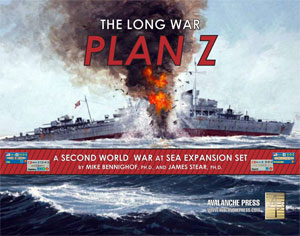 Editor’s Note: The Long War is an alternative-history setting that includes several of our game expansions including Plan Z, The Emperor’s Sword and Co-Prosperity Sphere. This brief history tells of the events that led up to the situation in each of those. The purpose is, obviously, the provide a background in which both Germany and Japan were able to build large surface fleets. Editor’s Note: The Long War is an alternative-history setting that includes several of our game expansions including Plan Z, The Emperor’s Sword and Co-Prosperity Sphere. This brief history tells of the events that led up to the situation in each of those. The purpose is, obviously, the provide a background in which both Germany and Japan were able to build large surface fleets.
The seeds of what would become known as the Long War (to distinguish it from the Great War) were planted in spring and summer of 1939. German pressure on Poland resulted in the Poles accepting an offer to join the Anti-Comintern Pact. Lithuania joined a few months later to forestall Polish demands for a federation that would in effect absorb Lithuania into Poland.
Seeing their Nazi rivals expanding into the “near abroad” – the lands that once belonged to the Tsarist Empire – the Soviet Union’s leadership grew gravely concerned. Some counseled caution, and advocated preparing the nation’s defenses against a German attack. Others advised a pre-emptive attack, an idea quickly quashed by the military leadership, as the Red Army was not ready to face the rapidly-rebuilding German forces. A third faction believed that the German imperialists would press for further gains, and the Soviet Union should forestall them by moving first in places such as Finland, Estonia, Latvia and Romania.
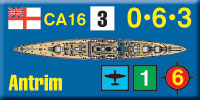 Two of the marshals on the Central Committee – Voroshilov and Timoshenko – argued against an expansionist policy. If the Red Army faced serious opposition, the troops could be bogged down away from the main front in case of a German attack. The third, Budenny, pointed out that artillery based on Finnish soil could already strike Leningrad. The Soviet Union needed a wider buffer zone. Two of the marshals on the Central Committee – Voroshilov and Timoshenko – argued against an expansionist policy. If the Red Army faced serious opposition, the troops could be bogged down away from the main front in case of a German attack. The third, Budenny, pointed out that artillery based on Finnish soil could already strike Leningrad. The Soviet Union needed a wider buffer zone.
First Secretary Josef Stalin eventually sided with his close friend Budenny. Foreign Minister Vyacheslav Molotov would present ultimata to the Finns, Estonians and Latvians requiring that they relinquish military bases and allow Soviet troops on their soil. In a nod to the caution of the other two marshals, Romania would wait until after those occupations had been completed. Meanwhile, expansion plans for the Red Army would be advanced.
Anticipating such a move, the three small nations had already begun secret talks with Sweden toward a mutual defense pact. Buoyed by promises of Swedish aid and hopes of other foreign assistance, all three governments rejected the Soviet demands.
Note: In the actual events, Latvia, Lithuania and Estonia acceded to Soviet demands; only Finland resisted. While many Swedes thought that Sweden would best be defended in Finland, the Finns’ harsh treatment of Social Democrats rankled badly with many Swedes. Finland was popular in Sweden; the Finnish government much less so. Sweden sat out the Winter War, sending large quantities of arms and ammunition and 8,000 volunteers, but no active troops.
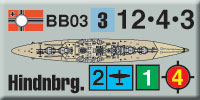 Stunned by this reversal, Stalin ordered the Red Army to execute its plans for invasions of all three nations. Red Army commanders, with no such plans in place, sent their troops forward in haphazard fashion, often lacking basic supplies like food and ammunition. The fighting began in late November 1939, and almost immediately the lead elements of the Soviet invading armies ran into trouble. Stunned by this reversal, Stalin ordered the Red Army to execute its plans for invasions of all three nations. Red Army commanders, with no such plans in place, sent their troops forward in haphazard fashion, often lacking basic supplies like food and ammunition. The fighting began in late November 1939, and almost immediately the lead elements of the Soviet invading armies ran into trouble.
Only on the Latvian front did the Soviets make progress, and even there they faced stiff resistance. Riga, the capital of Latvia, did not fall until January 1940 while Estonia’s capital of Talinn held out until March. The Finns, bolstered by active Swedish assistance, neared collapse but continued to defy the Red Army in hopes of promised active German, French and British intervention once spring arrived.
Soviet troubles in the Baltic states awakened the interest of Adolf Hitler; having run his economy very hot, he needed to start a war within months or face economic collapse. With Austria and Czechoslovakia having folded without fighting, and Poland and Lithuania joining the Axis, the roster of potential enemies had shrunk considerably. The Leader’s plan had always included the conquest of European Russia, and now that idiot Stalin had given him the opportunity to move his timetable forward.
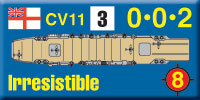 The Army leadership complained that they were not ready for such a campaign; they needed more resources and two more years to build up their divisions. The Air Force chief as always signaled full compliance with Hitler’s wishes, while the Navy would have little role to play except to continue building ships and training crews in preparation for the confrontation with the English. The Army leadership complained that they were not ready for such a campaign; they needed more resources and two more years to build up their divisions. The Air Force chief as always signaled full compliance with Hitler’s wishes, while the Navy would have little role to play except to continue building ships and training crews in preparation for the confrontation with the English.
The intervention would go forward as ordered, as soon as the ground had hardened in the spring. German troops already had a large presence in Poland, in the guise of a training mission, and now more divisions filtered into Polish camps and Lithuania as well. Polish counter-intelligence efforts kept the buildup secret, as well as the quiet mobilization of their own armies.
As expected by everyone except the Red Army, German, Polish and Lithuanian troops poured across the borders at dawn on Sunday May 12th, 1940. The Red Army, its expansion program only just begun, totaled about 110 rifle divisions and 44 cavalry divisions, with about a third of its infantry strength deployed against the Finns and the Baltic States.
The Germans had 10 panzer divisions, 95 infantry divisions (three of them motorized), four mountain divisions and one cavalry division. The Poles added 30 infantry divisions, three armored cavalry and six horsed cavalry brigades, and the Lithuanians fielded three infantry divisions. While the Soviets had far greater manpower reserves available, these hadn’t been mobilized and the Axis armies surged toward Leningrad, Moscow and Kiev.
Note: Those forces are roughly what the Germans fielded in the Western campaign in 1940, and the Poles in 1939 against the Germans (when they had only two small armored cavalry brigades).
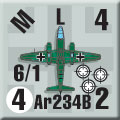 By July, German armies had ringed Leningrad, joined hands with the Finns and encircled the Soviet divisions that had attacked Latvia and Estonia. Polish uhlans had ridden into Kiev, while Minsk and Smolensk had fallen to the invaders. Most of the pre-war Red Army had been destroyed, yet new formations continued to be mustered and sent to the front. And as that front widened, the Axis armies became more dispersed, and as it moved ever deeper into Soviet territory, they became less capable of supplying themselves. Steady attrition of tanks and motor vehicles made it impossible for the Axis to keep their mobile formations at full strength, let alone increase them, and the war became ever more a struggle of infantry-based armies. By July, German armies had ringed Leningrad, joined hands with the Finns and encircled the Soviet divisions that had attacked Latvia and Estonia. Polish uhlans had ridden into Kiev, while Minsk and Smolensk had fallen to the invaders. Most of the pre-war Red Army had been destroyed, yet new formations continued to be mustered and sent to the front. And as that front widened, the Axis armies became more dispersed, and as it moved ever deeper into Soviet territory, they became less capable of supplying themselves. Steady attrition of tanks and motor vehicles made it impossible for the Axis to keep their mobile formations at full strength, let alone increase them, and the war became ever more a struggle of infantry-based armies.
In Berlin, the Army eyed the Navy’s priority allocations of steel and labor, and intrigued to have these diverted to tank and vehicle production. Adolf Hitler saw no purpose in assuring defeat in the coming campaign against Britain, and forced his followers to stay the course. Benito Mussolini committed a full third of the Royal Italian Army, 24 divisions, and in Romania Nazi agents helped overthrow King Carol in September and install Ion Antonescu as military dictator, bringing Romania’s army and its oil into the Axis fold.
In the late summer, the panzer divisions underwent a reorganization relying on fewer tanks, reflecting combat experience as well as the shortage of replacement vehicles. The Poles, not having the burden of a large naval building program, actually expanded their armored forces, upgrading their brigades to division size with new Polish-designed tanks.
The autumn campaign saw the Poles and Romanians overrun Ukraine, but Soviet resistance stiffened in front of Moscow and denied the Soviet capital to the Germans. The Red Army had miraculously replenished itself, and over the winter its depleted tank brigade began to receive new and powerful weapons. But would it be enough? Germany had finally switched to a full wartime economy, and produced more powerful tanks of her own. In the spring of 1941 the new McNutt Administration in the United States proclaimed a “cash and carry” policy on sales of military goods to warring countries, and the Axis nations spent some of their scarce hard currency reserves to bring in thousands of Ford and Studebaker trucks.
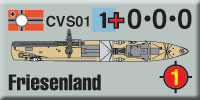 The Axis spring offensive, code-named Operation Barbarossa, kicked off in June 1941, with the last of eastern Ukraine, the industrial Donbas region and the oil of the northern Caucasus the primary Axis targets. The Red Army fought hard, but the panzers rolled up to the Volga all along the right bank from Voronezh to Astrakhan, including Stalingrad. The last remnants of the Soviet armies in the Caucasus crossed into Iran in November seeking internment. The Axis spring offensive, code-named Operation Barbarossa, kicked off in June 1941, with the last of eastern Ukraine, the industrial Donbas region and the oil of the northern Caucasus the primary Axis targets. The Red Army fought hard, but the panzers rolled up to the Volga all along the right bank from Voronezh to Astrakhan, including Stalingrad. The last remnants of the Soviet armies in the Caucasus crossed into Iran in November seeking internment.
The Soviet leadership receives even worse news that month, as Japan entered the war and within weeks had captured the Pacific Fleet base at Vladivostok and advanced along the Trans-Siberian Railroad to the shores of Lake Baikal. The Soviets could do little to stop them, and with Leningrad and Murmansk both fallen to the Axis the Soviets were increasingly isolated from any foreign sources of aid, but none of the Western powers were willing to help regardless.
Note: In this alternative history, the Japanese Empire is far larger, richer and more powerful than in our own history. They have no fear of American sanctions, and no grinding war in China bleeding their limited resources.
Better prepared for another winter, the Germans held their lines on the central front and when spring came, they finally took Moscow. Stalin refused to consider peace talks, but he soon succumbed to a botched dental operation and his successor A.A. Zhdanov agreed to a humiliating peace that yielded huge swaths of territory outright and placed others under Axis occupation.
With the Soviet Union defeated, the Axis turned to their next targets. But that’s another story.
Don’t wait to put Plan Z on your game table! Join the Gold Club and find out how to get it before anyone else, at a better price than anyone else!
Sign up for our newsletter right here. Your info will never be sold or transferred; we'll just use it to update you on new games and new offers.
Mike Bennighof is president of Avalanche Press and holds a doctorate in history from Emory University. A Fulbright Scholar and NASA Journalist in Space finalist, he has published way too many books, games and articles on historical subjects. A few of them did not suck.
He lives in Birmingham, Alabama with his wife, three children and his dog, Leopold. Leopold has been known to bark excessively.
|
